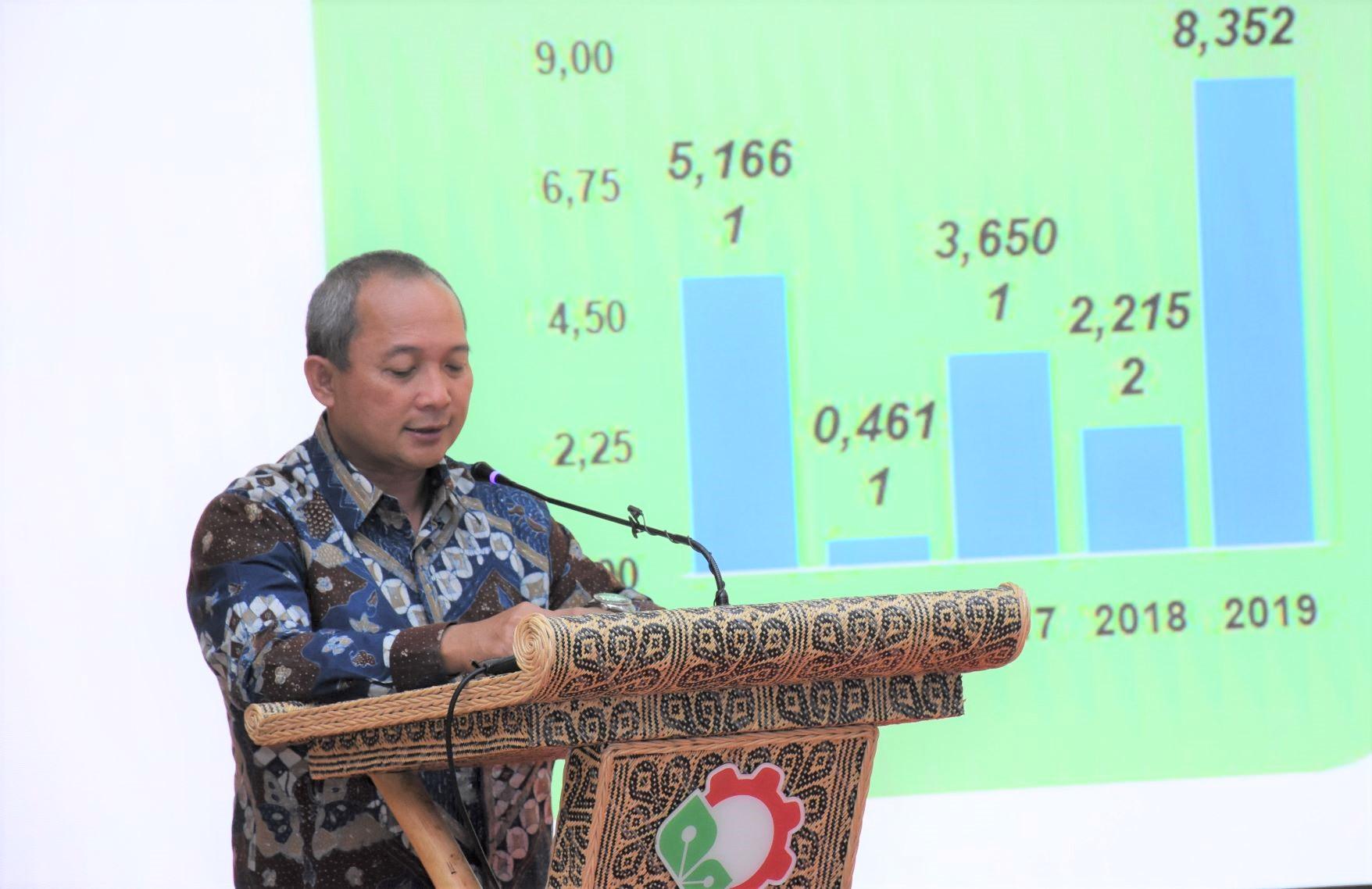
:
Oleh Penni Patmawati Rusman, Rabu, 30 September 2020 | 10:48 WIB - Redaktur: Penni Patmawati Rusman - 652
Jakarta, InfoPublik –Indonesia’s Industry Ministry continues to strive to make new breakthroughs in the industry sector by utilizing technological connectivity. One of the measures taken is encouraging transformation of its technical units which are spread across the country into more innovative work units. Such measures are parts of the strategy to implement the industry 4.0 while adapting to the new normal amid the Covid-19 outbreak.
A Focus Group Discussion on the Industry 4.0 Innovation Ecosystem held by Industry Ministry’s Industrial Research and Development Agency (BPPI) at the Bandung Textile Center on Thursday (24/9) discussed the issue. The FGD was attended by the BPPI Head Doddy Rahadi and officials of Industry Ministry’s technical units.
Doddy said that the technical units currently considered the foremost institutions in implementing the Making Indonesia 4.0 road map initiative.
"We will continue disseminating, creating and testing industrial solutions through consulting services, certification services, training services and sustainable technology utilization services," he said when met in Jakarta, Monday (28/9).
In order to realize the Industry 4.0 innovation ecosystem, continued Doddy, BPPI has compiled guidelines on Industry 4.0 Learning Factory and Technoware, Infoware, Humanware and Organware (THIO) assessments as tools used by the Ministry’s technical units and Industrial Research and Standardization Centers (Baristand) in improving services to the business by utilizing the application of industry 4.0 technologies.
Doddy explained, Industry 4.0 Learning Factory is a platform that contains methods for implementing industry 4.0 for manufacturing companies in the country by involving the government as a policy maker who always supports the progress of the industrial sector in Indonesia.
"The success rate of Industry 4.0 Learning Factory is not only measured in terms of the economy, but must also be measured by intangible benefits, such as the number of industries implementing Industry 4.0, the number of human resources who are up skilling, the number of appropriate technology, and the number of patents produced," he explained.
To support the technical units in making the Industry 4.0 Learning Factory, the Ministry has also conducted a THIO assessment to see the extent of the readiness of technology, human resources, and information systems and organizations.
"Identification of constraints and pain points faced is very important because it will be the basis for recommendations to make demonstrations in the use of industry 4.0 technology one of which is the availability of connection networks and supporting digital facilities," said Doddy. This means that the use of industry 4.0 technology is a vital part of the digital transformation process.
BPPI Head also reminded the industry is currently waiting for solutions from the government regarding successful examples of Industry 4.0 technology.
"Because Industry 4.0 technology provides easy and real time digital access and increases the productivity and quality of products produced by manufacturing companies," he said.
After giving his remarks to the FGD, BPPI head visited the learning factory showcase project at the Center for Textiles.
In 2020, the Center for Textiles is one of the six technical units under BPPI that began implementing the Learning Factory program initiated by the Research and Development Center for the Chemical, Pharmaceutical, Textile, Metal, Machinery, Transportation and Electronics Industry.
Currently, the Industry Ministry is actively coordinating and building collaborative networks between stakeholders to accelerate the transformation of industry 4.0. In this case, the Ministry has initiated an industry 4.0 ecosystem called the Indonesia 4.0 Ecosystem (SINDI 4.0) as a forum for synergy and collaboration, both government, regional companies, industry players, academics and R & D institutions, technical providers, consultants and of course financial actors.
Reporter: Baheramsyah, Translator: Penni P. Rusman